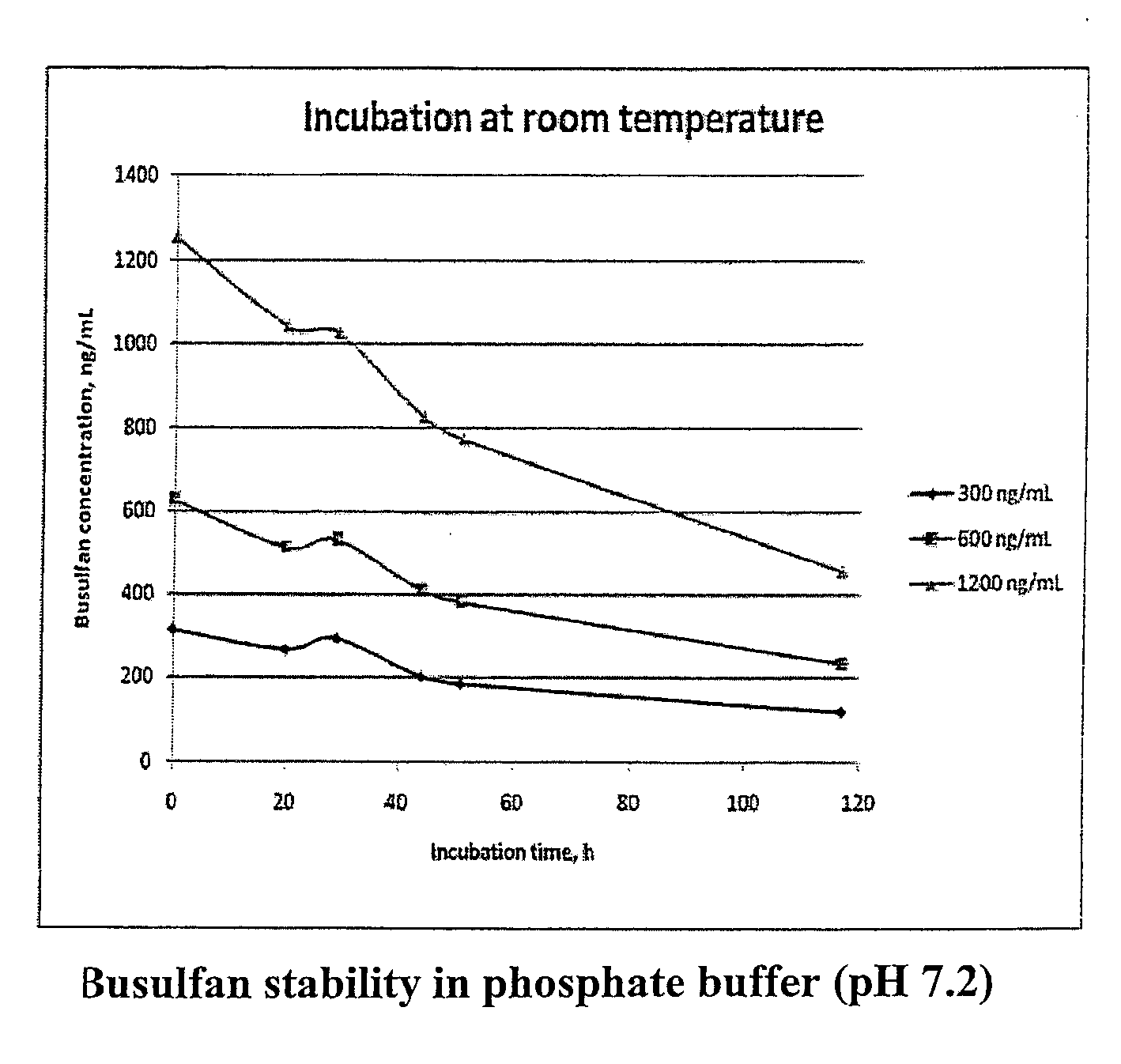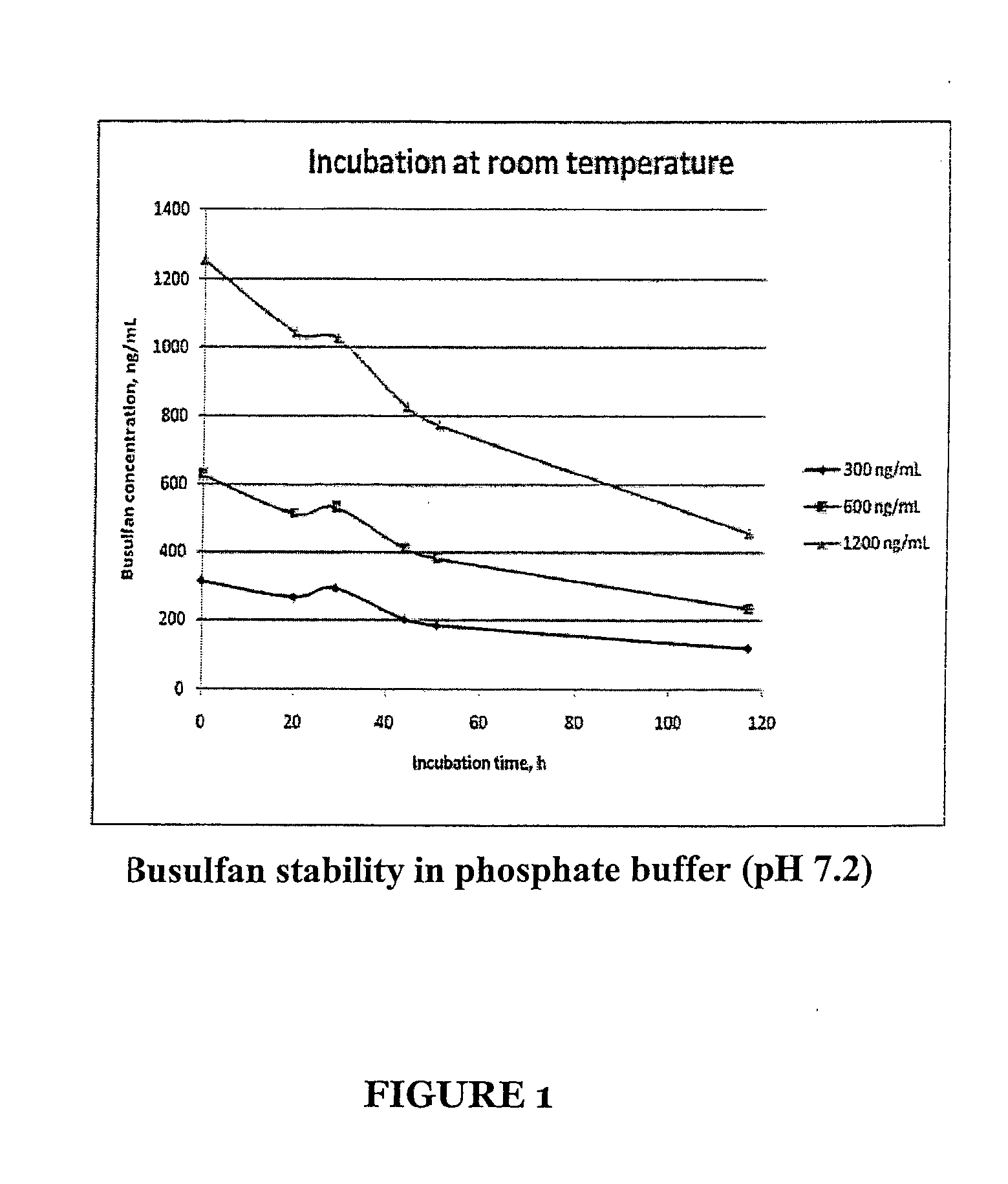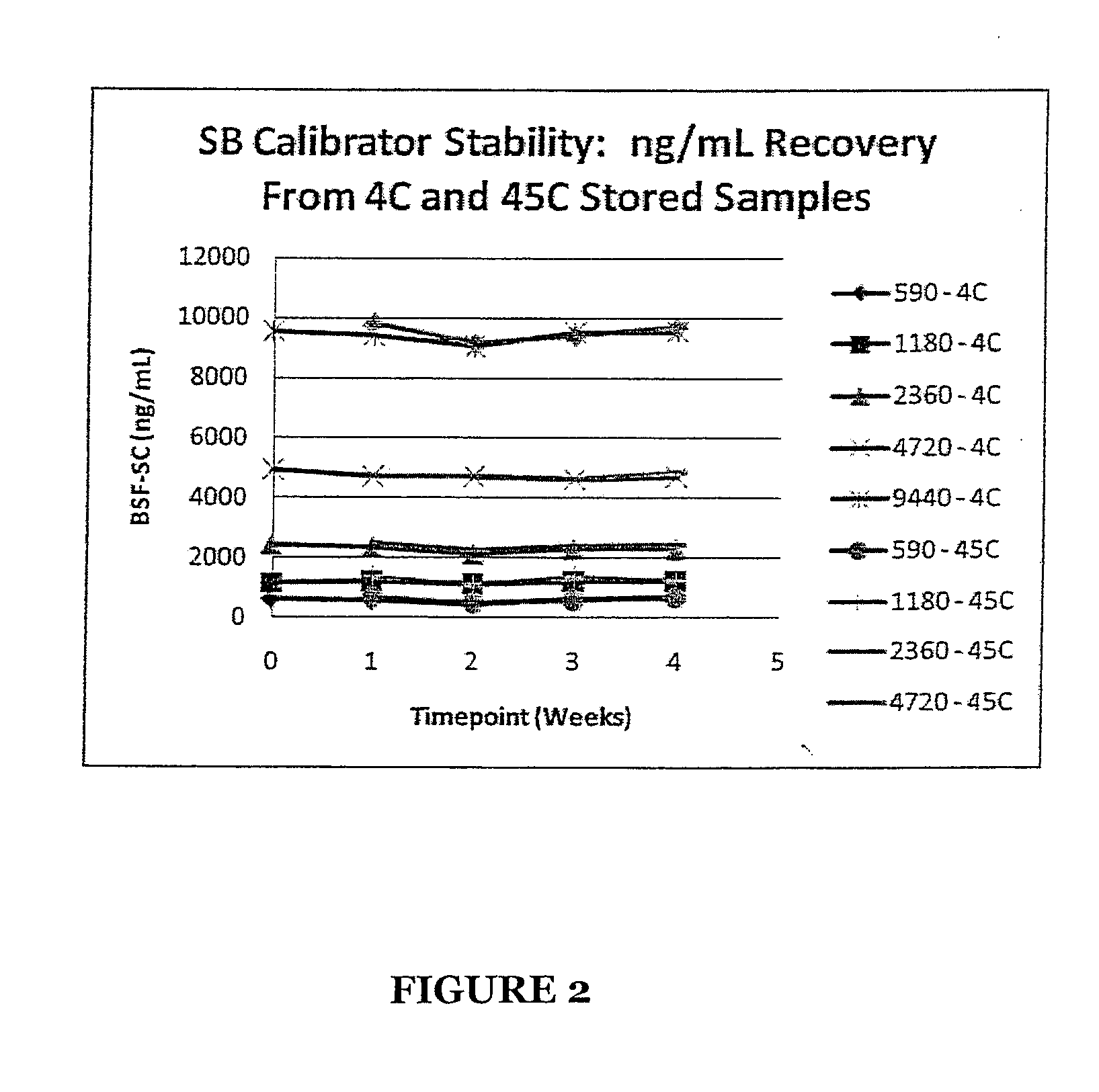Stabilized Standards for Busulfan Immunoassay
a technology of immunoassay and busulfan, which is applied in the field of immunological assay standards, can solve the problems of unstable busulfan in the standard, inability to keep at room temperature for more than a year, and compound has been associated with debilitating side effects
- Summary
- Abstract
- Description
- Claims
- Application Information
AI Technical Summary
Benefits of technology
Problems solved by technology
Method used
Image
Examples
example 1
Busulfan Calibrators
[0078]A stock solution of busulfan at 5 mg / mL in acetronitrile was prepared and stored in amber glass at −20° C. To prepared the six concentrations of the calibrators (75 ng / mL, 150 ng / mL, 300 ng / mL, 600 ng / mL, 1200 ng / mL, 2000 ng / mL) the stock solution was diluted in a buffer comprising an aqueous buffer comprising 0.02 M sodium phosphate, 0.15 M NaCl, 0.1% BSA, 0.01% Thimerosal, pH 7.2. as follows: 0.1 mL of stock solution into 249.9 mL for final concentration of 20000 ng / mL busulfan; the 2000 ng / mL stock solution was then serially diluted with the above aqueous buffer to prepare the other concentrations. The final concentrations of the calibrators were verified by GC-MS.
example 2
Synthesis of Stabilized Busulfan Amide Derivative
[0079]Note: The synthesis of the amide of formula II followed the procedure described by Johnston et al.*
[0080]Compound 1 (17.63 g, 200 mmol) was dissolved in anhydrous benzene (200 ml). K2CO3 (325 mesh, 60.8 g, 440 mmol) was added. A solution of methanesulfonyl chloride (34 mL, 440 mmol) in anhydrous benzene (100 ml) was added dropwise to the reaction mixture. A white precipitate was formed. The resulting suspension was heated to reflux. After 2 h the reaction mixture was allowed to cool, the white solid was collected by filtration, and was washed with benzene. After drying under high vacuum, the solid was triturated in water (250 ml), collected by filtration, and washed with water. The crude material was recrystallized from MeOH and from 1 M HCl (twice) to provide of the amide of formula II as substantially pave material (14.5 g, 30 % yield).
example 3
Preparation of Microtiter Plate Coated with Anti-Busulfan Antibody
[0081]For the purpose of determining amide of formula II equivalents to busulfan of formula I and assaying busulfan with the amide standards by Enzyme-Linked Immunosorbent Assay (ELISA) method, polystyrene microtiter plates optimized for protein binding and containing 96 well per plate were used. Each well was coated with an antibody to busulfan produced as described in U.S. Pat. No. 7,238,024 Example 7, by adding 100 μL of antibody at 7.5 μg / mL in 0.05M sodium bicarbonate, pH=9.6 and then were blocked with 400 μL of 5% sucrose, 0.2% sodium caseinate solution for 30 minutes at room temperature. After removal of the post-coat solution the plates dried at 37° C. overnight.
PUM
| Property | Measurement | Unit |
|---|---|---|
| Concentration | aaaaa | aaaaa |
| Concentration | aaaaa | aaaaa |
| Concentration | aaaaa | aaaaa |
Abstract
Description
Claims
Application Information
 Login to View More
Login to View More - R&D
- Intellectual Property
- Life Sciences
- Materials
- Tech Scout
- Unparalleled Data Quality
- Higher Quality Content
- 60% Fewer Hallucinations
Browse by: Latest US Patents, China's latest patents, Technical Efficacy Thesaurus, Application Domain, Technology Topic, Popular Technical Reports.
© 2025 PatSnap. All rights reserved.Legal|Privacy policy|Modern Slavery Act Transparency Statement|Sitemap|About US| Contact US: help@patsnap.com



